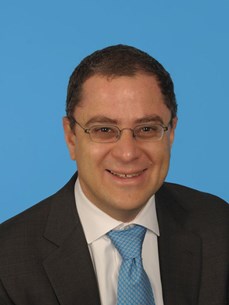Meeting
2014 ASCO Annual Meeting

Memorial Sloan-Kettering Cancer Center and Weill Cornell Medical College, New York, NY
Ghassan K. Abou-Alfa , Chia-Jui Yen , Jorge A. Carrasquillo , Chih-Hung Hsu , Bolorsukh Gansukh , Jennifer Ma , Ellen Hollywood , Peter J Wan , Yu Yun Shao , Zhong-Zhe Lin , Catherine Frenette , Bert H. O'Neil , Lawrence H. Schwartz , Toshihiko Ohtomo , Takayoshi Tanaka , Ya-Chi Chen , Stacey Ukrainskyj , Leonard Saltz , Reuy-min Lee , Ann-Lii Cheng
Background: GC33 is a recombinant humanized monoclonal antibody against Glypican-3 (GPC3) which is highly expressed in HCC. GC33 elicits antibody-dependent cellular cytotoxicity against human HCC cell lines in vitro. GC33 and sorafenib showed an additive anti-tumor effect in xenograft mouse model. This is a phase I dose escalation study to evaluate safety/tolerability and pharmacokinetics (PK) of combination therapy in HCC. Methods: In a 3+3 design dose escalation design GC33 given intravenously 2.5, 5 and 10 mg/kg weekly, then 1,600 mg every 2 weeks, and then 1,600mg weekly, all in combination with sorafenib 400mg twice daily. Patients with advanced HCC patients, age ≥18, ECOG 0-1, Child-Pugh A, adequate organ functions (platelets ≥ 100 x109/L, ANC ≥ 1500, AST/ALT ≤ 5 x ULN, Bilirubin ≤ 1.5 mg/dL, and creatinine ≤ 2 x ULN), and no prior therapy with sorafenib were eligible. Primary endpoints were safety and tolerability and secondary endpoints PK of GC33 and sorafenib and efficacy. Tumor assessment was based on investigators using RECIST 1.0. Safety was evaluated by CTCAE 3.0. Results: 40 patients were enrolled between September 2009 and July 2013 as follows (n): 2.5 mg/kg weekly (qw) (12), 5 mg/kg qw(12), 10 mg/kg qw(3), 1,600mg q2w (6) and 1,600mg qw (7). There were 35 men/5 women, median age 60, Asian 21/Non-Asian 19, HBV /HCV/neither 19/9/13, ECOG 0/1 17/23. There were 3 DLT: Grade 3 hyponatremia at 5 mg/kg GC33 cohort, grade 3 hyponatremia and hypoglycemia at 1600mg q2w, and grade 3 ALT increase at 1600 mg qw. Thirty-six patients developed AE’s ≥ Grade 3, including 10 (25%) with increased Lipase, 10 (25%) with increased AST, and 3 (7.5%) with increased ALT. Dose delays occurred in 6/7 patients receiving GC33 1600mg qw due to known sorafenib-related toxicities. There were no complete responses, one partial response (unconfirmed), and 6 patients (15%) have experienced stable disease for ≥ 5 months. PK parameters Cmax and AUCt of GC33 and sorafenib following combination therapy were comparable to previously reported data of either single agent. Conclusions: No maximum tolerated dose of GC33 could be defined when given in combination with sorafenib at the dose of 400mg bid in this study population. Clinical trial information: NCT00976170.
Disclaimer
This material on this page is ©2024 American Society of Clinical Oncology, all rights reserved. Licensing available upon request. For more information, please contact licensing@asco.org
2014 ASCO Annual Meeting
Poster Session
Gastrointestinal (Noncolorectal) Cancer
Gastrointestinal Cancer—Gastroesophageal, Pancreatic, and Hepatobiliary
Hepatobiliary Cancer
NCT00976170
J Clin Oncol 32:5s, 2014 (suppl; abstr 4100)
10.1200/jco.2014.32.15_suppl.4100
4100
187
Abstract Disclosures
2023 ASCO Gastrointestinal Cancers Symposium
First Author: Jessica Dreger McDermott
2022 ASCO Annual Meeting
First Author: Qing Zhou
2023 ASCO Genitourinary Cancers Symposium
First Author: Monika Joshi
2023 ASCO Annual Meeting
First Author: Guoxiang George Shen